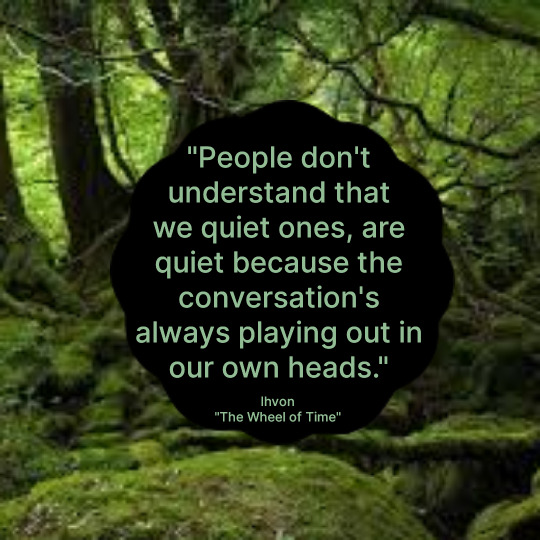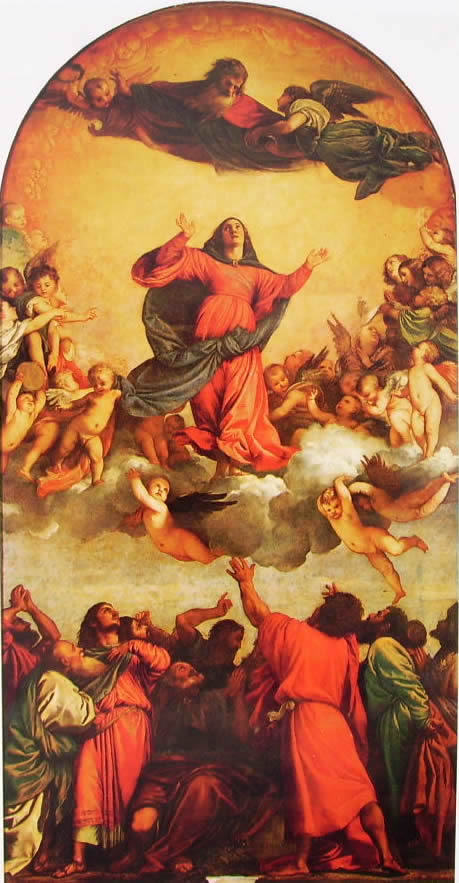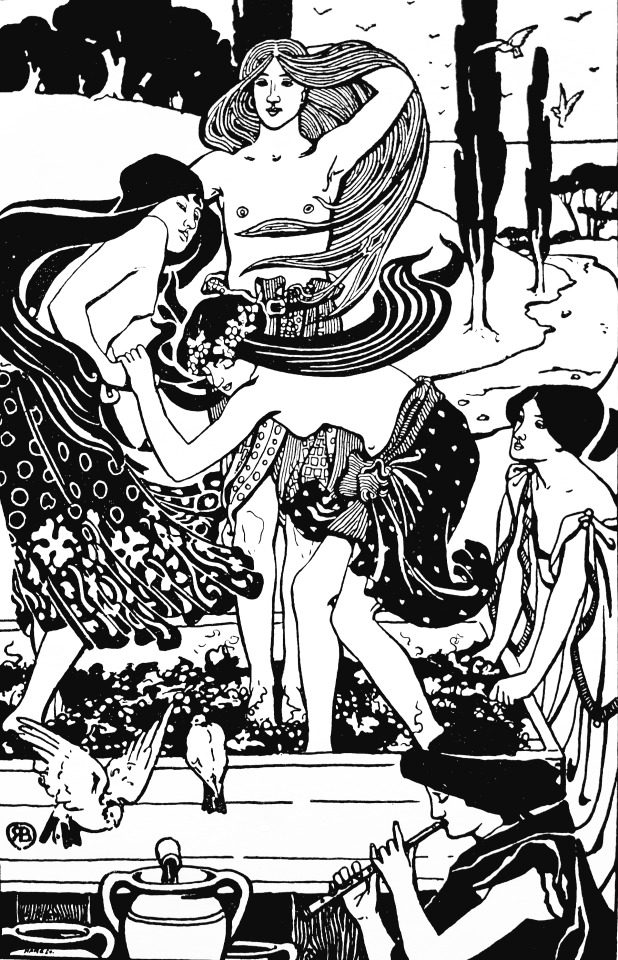#natura naturans
Text

#freedom#earth girl#harmonic vibes#individual#life#beauty#scorpio#introvert#infp#natura naturans#LOTR#leisure
1K notes
·
View notes
Note
ok but now I need to know your thoughts on the taylor swift lyrics. what songs did you analyze and what were your thoughts on them????
Alright so first of all for context:
this was a lecture about the literary era of romanticism, so for most of that lecture we had been talking about the literary and philosophical concepts and ideas present in that era.
And then the professor went "ok so I am not a swiftie - I haven't even listened to her newest album yet - but I believe Swift's music greatly encapsulates a - simplified , pop-cultural - continuation of the ideas of romanticism in the modern day....so let's analyse some of her song lyrics-"
So he had us quickly look at a few song lyrics from different songs of hers, but the ones he stayed on longest - and the ones he had us do proper academic analysis of - were these from "My tears ricochet" from her Folklore album:

I have to note that these aren't my personal thoughts, I'm just recounting what happened in the lecture, and I'm putting this under a cut so that it isn't super long :
So multiple students (it was a very tightly filled classroom, had to be at least 100-150 students there) had participated in analysing these lyrics and I gotta be honest I don't remember most of the exact details of their analysis because I had a lot of classes today and had been awake since 6am but I'll try to summarize as best I can.
Essentially the main point was the comparison of these lyrics with philosophical concepts by Schelling and especially a comparison in context of this aphorism by german romanticist poet Novalis:
"Wir suchen überall das Unbedingte und finden immer nur Dinge"
["Everywhere we look for the Absolute yet we can only ever find things." (in the original german it is a wordplay)]
So one angle of analysis was that these two verses of Swift's lyrics follow this philosophical concept as posited by Hardenberg/Novalis - such as "home" here, as the only defined location, representing the Absolute , the object of Longing as it is conceptualised in romanticism, this that is desired innately but cannot be reached in ways humanly possible, as humans can only ever find "Things": abstractions, objects and concepts limited in their scope and at most a reflection of the Absolute, something that can at best be asymptotically approximated but not be directly perceived or grasped physically or intellectually. Thus here the idea that the lyrical "I" can go "anywhere" and , following that, observe anything, and yet will always be unable to reach the defined and Absolute of "home."
Home then, as defined by other students in the lecture, would be the innate idea of some sort of absolute security in the self, a place of comfort and belonging and a place of certainty. Home, thus, as not just a location but as a concept: a kind of pre-conscious knowledge of being ('Being' here possibly in the hegelian sense), an experience of pure existence. Suppose an analysis also referencing Spinoza's concept of the Substance, the natura naturans, which singular modi are necessarily extensions of and ultimately 'return' to ( 'return' here used simplifying, as modi constituate extensions or aspects of the indivisible infinite Substance under the attributes of Thought and Extension, which thus cannot really be divided and, following, cannot 'return' to it since they were never truly separated.)
Of course, romanticism and general philosophy of the era being concerned with theological questions as well, one student pointed out another angle to view Swift's lyrics under in regards to romanticist theoreticism, that being the theological one: "Home" as the Absolute and the Absolute as God or a christian-mysticist interpretation of it either way, "Anywhere" as the world of human perception and "Home" as the world of god that life springs from, in relation to an article the professor had mentioned about a Times (iirc) journalist visiting a Taylor Swift concert and calling it a "religious experience" to sing specifically the quoted line with and within a crowd of tens of thousands of people.
In regards to this last point the professor also specified that "religious experience" here is not necessarily limited to the scope of (protestant) christianity but rather is to be seen as some sort of pre- or post-religious understanding of a form of ontological transcendence that escapes the boundaries of rational describability.
Following that we also analysed the album title and its cover art:
The romanticist connection in the title being fairly obvious as "Folklore" as a literary category is something romanticist authors in their nature-mysticism and attempt at distinction from Enlightenment era concepts of pure reason loved to discuss, recreate and include in their works.
Furthermore then the connection of the cover art , which students compared to works of famous romanticist painter Caspar David Friedrich (here the painting "Easter Morning"):


The composition of a lone human figure among the trees during a foggy morning or evening is a very popular motif in (german) romanticism as the fog represents the Unknown and - as mentioned above - the always out of reach and never truly perceptible (by human means) Absolute as well as the everlasting Longing towards it. The trees and forests as well a popular romanticist theme as part of its nature-mysticism and above mentioned contrast to the Enlightenment rationalism as practiced in the cities and structured human society.
Apparently on either this or the Evermore album (I don't know on which as I don't listen to Swift's songs and can't remember which song exactly the professor quoted there) there is a lyric saying "we are the new romanticists" as well.
All this to say that after probably twenty minutes of analysing Taylor Swift lyrics in an academic framework of literary theory and ontological philosophy- as well as repeated promises by the professor that he "is not a swiftie" - the prof stated that "Taylor Swift probably didn't put nearly as much thought into this as we did just now but she is an international phenomenon and does - wether intentional or not - make use of concepts and ideas used in romanticist writing and philosophy so analysing her lyrics seemed apt."
#ask#anon ask#WHEW THAT TOOK A WHILE TO WRITE#sorry but I had to check my references and everything lmao#but yes this is the gist of what that discussion during the lecture was like#and yes people did chuckle when he told us to analyse a Taylor Swift song
8 notes
·
View notes
Text
Last September, while working at his desk in Philadelphia, Samuel R. Delany experienced a mysterious episode that he calls “the big drop.” His vision faded for about three minutes, and he felt his body plunge, as if the floor had fallen away. When he came to, everything looked different, though he couldn’t say exactly how. Delany, who is eighty-one, began to suspect that he’d suffered a mini-stroke. His daughter, Iva, an emergency-room physician, persuaded him to go to the hospital, but the MRI scans were inconclusive. The only evidence of a neurological event was a test result indicating that he had lost fifteen per cent of his capacity to form new memories—and a realization, in the following weeks, that he was unable to finish his novel in progress, “This Short Day of Frost and Sun.” After publishing more than forty books in half a century, the interruption was, he told me, both “a loss and a relief.”
For years, Delany has begun most days at four o’clock in the morning with a ritual. First, he spells out the name Dennis, for Dennis Rickett, his life partner. Next, he recites an atheist’s prayer, hailing faraway celestial bodies with a litany inspired by the seventeenth-century philosopher Baruch Spinoza: “Natura Naturans, system of systems, system of fields, Kuiper belt, scattered disk, Oort cloud, thank you for dropping me here.” Finally, he prepares oatmeal, which he faithfully photographs for the friends and fans who follow him on Facebook. Every so often, when the milk foams, he sees Laniakea—the galactic supercluster that’s home to Earth.
In the stellar neighborhood of American letters, there have been few minds as generous, transgressive, and polymathically brilliant as Samuel Delany’s. Many know him as the country’s first prominent Black author of science fiction, who transformed the field with richly textured, cerebral novels like “Babel-17” (1966) and “Dhalgren” (1975). Others know the revolutionary chronicler of gay life, whose autobiography, “The Motion of Light in Water” (1988), stands as an essential document of pre-Stonewall New York. Still others know the professor, the pornographer, or the prolific essayist whose purview extends from cyborg feminism to Biblical philology.
There are so many Delanys that it’s difficult to take the full measure of his influence. Reading him was formative for Junot Díaz and William Gibson; Octavia Butler was, briefly, his student in a writing workshop. Jeremy O. Harris included Delany as a character in his play “Black Exhibition,” while Neil Gaiman, who is adapting Delany’s classic space adventure “Nova” (1968) as a series for Amazon, credits him with building a critical foundation not only for science fiction but also for comics and other “paraliterary” genres.
Friends call him Chip, a nickname he gave himself at summer camp, in the eleventh year of a life that has defied convention and prejudice. He is a sci-fi child prodigy who never flamed out; a genre best-seller widely recognized as a great literary stylist; a dysgraphic college dropout who once headed the Department of Comparative Literature at the University of Massachusetts, Amherst; and an outspokenly promiscuous gay man who survived the aids crisis and has found love, three times, in committed, non-monogamous relationships. A story like Delany’s isn’t supposed to be possible in our society—and that, nearly as much as the gift of his writing, is his glory.
It took several months to persuade him to meet. Delany has polemicized against the face-to-face interview, reasoning that writers, who constitute themselves on the page, ought to be questioned there, too. He warned in an e-mail that a visit would be a waste of time, offering instead a tour of his “three-room hovel” via Zoom: “No secret pile will be left unexplored.” Yet a central theme in his work is “contact,” a word he uses to convey all the potential in chance encounters between human beings. “I propose that in a democratic city it is imperative that we speak to strangers, live next to them, and learn how to relate to them on many levels, from the political to the sexual,” he wrote in “Times Square Red, Times Square Blue” (1999), a landmark critique of gentrification which centered on his years of cruising in the adult theatres of midtown Manhattan.
His novels, too, turn on the serendipity of urban life, adopting the “marxian” credo that fiction is most vital when classes mix. Gorgik, a revolutionary leader in Delany’s four-volume “Return to Nevèrÿon” series, rises from slavery to the royal court in an ancient port city called Kolhari, where he learns that seemingly centralized “power—the great power that shattered lives and twisted the course of the nation—was like a fog over a meadow at evening. From any distance, it seemed to have a shape, a substance, a color, an edge. Yet, as you approached it, it seemed to recede before you.”
In January, Delany finally allowed me to visit him at the apartment complex that he now rarely leaves. A hulking beige structure near the Philadelphia Museum of Art, it looms like a fortress over the row houses of the Fairmount. I crossed a lobby the length of a ballroom and rode the elevator to the fourth floor. As I walked down the hallway, I noticed a small man behind a luggage trolley taking my picture. It was Delany, smiling in welcome with his lively brown eyes and strikingly misaligned front teeth.
[A Delightful portrait of my favorite Science Fiction writer]
21 notes
·
View notes
Text
Kendime Notlar
Spinoza’da karşılaşmalarla ihtivasını bulan oluşun birincil ilkesi bu dinamizmi başlatan ve sürdüren itkidir. Bu Schopenhauer’da karşılığını Büyük İsteme, Nietzsche’de ise Güç İstenci olarak bulur. Bu birincil ilke spinozanın tanrısının bizatihi natura naturans ile natura naturata arasındaki toplamın bir nevi bir adım ötesindeki kapsayıcı ancak yaratılan doğanın da içselliğinde bulunan özdür. Nietzsche, varlığın itici gücünde acının özel yerine değinir ve bu hususta acıdan kaçınan çirkin varoluşun özünde hayatı yadsıdığını söyler. Bu bağlamda bu canlıda ve maddede hareket etme istencini yaratan unsur için çok güzel bir kavramla tanıştım: Qual.
Qual direkt çevirisinde işkence anlamına gelmektedir. Ancak Böhme’nin Latince qualitas (nitelik) sözcüğüne referansla biçimlendirdiği şekliyle, bir çeşit acı etkisi altında bu etkiye karşıt olarak hareket edici bir tepkidir. Bu yukarıda ifade ettiğim yaşamsal itkinin merkezine konur Böhme tarafından. Bu kullanım modern psikolojide de oldukça anlamlıdır. Lacan, arzunun kesin niteliği hakkında bir şey diyemesek dahi öznenin itici bir gücü olduğunu fantasiyi formülleştirmesi üzerinden ikincil olarak söyler. Arzu yokluğa dönük bir tamamlama arzusu bakımından bir acı sürecidir, tatminsizliğin acısıdır. Bu anlamda doğanın dinamizmini kazandıran ve yaşamın (Spinozacı anlamıyla tanrının) ifadesini taşıyan conatus’un bir yorumudur Qual. Bu ifadenin merkezindeki acı bir şeyin varlığının yarattığı baskının acısından ziyade, noksanlığının yarattığı tatminsizliğin acısının yarattığı benlik sınırlarını genişletme dürtüsü gibi gelmekte bana.
27 notes
·
View notes
Text


This is Cinder, my sona. Cinder is a Lynxura from the planet Natura. She used to be an Animal Jam oc. Cinder herself is sarcastic and moody, but she's still hopeful even though thinking on the bright side is hard.
The planet Natura is a life-filled world with three suns and three moons. Naturans are of clade of highly intelligent animal-like plants with many species. They have antennae and a plant on their heads. They come from seeds planted in the ground that appear to look like a normal succulents until they emerge from the ground a year later. Naturans, despite being a large variety of species are united and have space-age technology. They are fighting a war against the Pharrupts, an alien species corrupted by magic.
Cinder was born on Shiver Mountain with her brother, Ash. Her parents disappeared without a trace one day, so she went on an adventure, fueled by finding out what actually happened and why. This led her down a rabbithole of mystery, and she then soon realized that the reason her parents disappeared was part of something much bigger. A Toucura named Meek was working with the Pharrupts- alien poison elementals who wanted to take over Natura and the rest of five systems. They were working together to build a massive portal to the Pharrupt’s home planet, Venellum, and in return the Pharrupts would return his dad and the gods… as well as something else. The Pharrupts want to harness all elemental magic so they could use it not only to take over all of five systems, but also to align the planets in not just the instinct system, but eventually all of five systems for an unknown purpose. Obviously they were tricking Meek, but Meek didn’t care. He wanted to be powerful, to be seen as a hero, but in the end the portal didn’t even work. Portals that large, spanning over half the land mass, couldn’t possibly work. So, together with a few other Naturans, Cinder saved Natura by shutting down the malfunctioning portal to an undetermined planet... at a great cost. She was transported somewhere offworld... to a world called Earth. Cinder had to return. She missed her brother and her parents, along with her new friends. On earth, she was discovered by their government and captured as an alien specimen. She tried to escape multiple times but was unable… until a different alien also looking to escape blew up an entire wall. Cinder escaped and hid, but still didn’t know how to return. Earth was non-magical and Cinder couldn’t find anything remotely like portal crystals. She was still trapped… but not alone. She met up with a pair of dragons named Ivy and Plutonium who had a spacecraft, but it broke and the dragons were too large to go undetected to find materials and fix it. That’s where Cinder came in. She was small enough to sneak around and even disguise herself on a few occasions as human. Eventually she and the dragons were able to put together a scrappy ship to return home and explore the cosmos along the way. When she returned to Natura, much had changed. A war had started over the elementals and more Naturans were discovering abilities they didn’t know they had. Ash informed Cinder that they still couldn’t find their parents, so Cinder hides her sadness through her goofiness and sarcasm. Cinder now works as a scientist to create anti-Pha technology and to discover the science behind elemental magic to uncover its full potential and why the Pharrupts (and other Phas) want it.
3 notes
·
View notes
Text
Deleuze provisionally takes the side of the demonic and the Antichrist in order to redeem everything, not as entity but as being/becoming, or what Spinoza calls natura naturans.
Crockett, C.: "St Gilles between the Divine and the Demonic", in: Colby Dickinson (Ed.), The Postmodern Saints of France.
1 note
·
View note
Text
Finnlando, lando en Eŭropo

Finnlando (finne Suomi), ankaŭ konata kiel la lando de mil lagoj, estas lando situanta en Norda Eŭropo. Ĝi limas al Svedio, Norvegio, kaj Rusio, kaj havas populacion de proksimume 5.6 milionoj da homoj. Finnlando estas konata pro sia mirinda natura beleco, noviga teknologio kaj alta vivnivelo.
Unu el la plej okulfrapaj trajtoj de Finnlando estas ĝiaj vastaj kaj diversaj naturaj pejzaĝoj. Kun pli ol 188.000 lagoj kaj 75% de la lando kovrita de arbaroj, Finnlando estas la paradizo de amantoj de naturo. Dum la vintraj monatoj, la plej norda regiono de Finnlando, Laponio, estas transformita en vintrajn mirindaĵojn kun neĝaj arbaroj, frostaj lagoj, kaj la famaj nordaj aŭroroj. En la somero, vizitantoj povas ĝui la noktomezan sunon, kie la suno neniam plene subiras, disponigante senfinajn taglumajn horojn por esplori la naturan belecon de Finnlando.
1 note
·
View note
Text
Monumento Continuo, Superstudio
1
“Finally,” continued Natalini, “we started designing negative utopias like Il Monumento Continuo,”—the grid scaled up to the dimensions of the globe—“images warning of the horrors architecture had in store with its scientific methods for perpetuating standard models worldwide.” Mixing Modernist techniques of photomontage with good old-fashioned linear perspective (as developed in the 1400s by Brunelleschi in Superstudio’s hometown of Florence), the scarily compelling Continuous Monument images were produced at a time when venerable old cities like Genoa were being scarred by highway viaducts driven bang through their centers in the name of “progress” and the unstoppable circulation of goods and capital. But The Continuous Monument was profoundly ambiguous: looking back to historical archetypes such as the Great Wall of China, the Pont du Gard and ancient-Egyptian mastabas, it was as mute, mysterious and pseudo-mythological as the black monolith in 2001: A Space Odyssey (which had just been released), at once a very practical answer to the ghastly uniform sprawl that was blighting cities across the world—instead of endless suburbia, why not tidy everything away into a continuous linear building that demarcates a clear divide between countryside and nature?—and a distillation and sublimation of the very same bland uniformity it purported to counter.
divisare
Crediamo in un futuro di architettura ritrovata, in un futuro in cui l’architettura riprenda i suoi pieni poteri abbandonando ogni sua ambigua designazione e ponendosi come unica alternativa alla natura. Nel binomio natura naturans e natura naturata scegliamo il secondo termine. Eliminando miraggi e fate morgane di architetture spontanee, architetture della sensibilità, architetture senza architetti, architetture biologiche e fantastiche, ci dirigiamo verso il «monumento continuo»: un’architettura tutta egualmente emergente in un unico ambiente continuo: la terra resa omogenea dalla tecnica, dalla cultura e da tutti gli altri imperialismi. ( 1969 )



#superstudio#monumento continuo#continuous monument#architecture#radical architecture#70s architecture
0 notes
Photo

LATO sensu. Declinazioni del mosaico contemporaneo
a cura di Sabina Ghinassi, Eleonora Savorelli e Paolo Trioschi
Biblioteca Classense / Manica Lunga e Chiostrino dei Morti
8 ottobre – 12 novembre 2022
L’esposizione intende porsi come punto di contatto tra l’ultima edizione del Premio Internazionale GAeM (Giovani Artisti e Mosaico) del 2019 e quella prevista per il 2023. La pluralità dei linguaggi è la chiave di lettura attraverso cui comprendere l’intera mostra, che desidera proporre un discorso trans-generazionale il cui focus è il mosaico contemporaneo.
In questa mappatura dell’arte musiva contemporanea, artisti italiani di nascita e di adozione, di generazioni differenti, con stili e tecniche differenti, trovano un terreno comune su cui costruire, pezzo dopo pezzo, tessera dopo tessera, un percorso espositivo che possa abbracciare varie forme d’arte, legate al mosaico per le affinità, le assonanze, le sedimentazioni, le ibridazioni più svariate.
Dal neo-pop ludico e vitalistico alla riflessione intimista e trasognata della memoria, dalla natura naturans della materia e del corpo, sino alla bellezza più folgorante e incandescente: tutto questo è il mosaico oggi.
L’orizzonte che l'esposizione propone è quello della pluralità dei linguaggi e delle relazioni che attraverso nel mosaico in modo libero, alle volte deliberatamente disturbante, innovativo o, al contrario, quasi vernacolare.
Lavorando con e intorno al mosaico nel senso più LATO del termine, dal registro più filologico a quello concettuale a quello più intensamente sperimentale, gli artisti coinvolti fanno spesso del mosaico il tramite per costruire delle opere che dichiarano come il linguaggio musivo possa essere un dispositivo legato in modo fondante alle esperienze e ai processi artistici multidisciplinari più innovativi del panorama attuale.
0 notes
Text
La maniero kiel marŝas la mondo kaj okultismaj ideoj, mi vidas ambaŭ pli kaj pli samiĝanta. Ne, homoj en plimulto ne konscie sekvas tiajn ideojn, sed la vojo sur kiu ili estas... estas tiel simila; iu aŭ sekvas la similan vojon nereligie, aŭ sekvas religie, kun spirita rigardo, ni nomu, al la mondo, kio finfine estas ĝuste la sama ol la okultisma.
Rigardante ekstere, sensencaĵo oni dirus ke kion mi diras estas, ĝuste kiel oni rigardas kompleksan matematikan formulon ne sciante la solvon, ne kompreninte la bazon. Sed, ni observu, dum okultismaj ideoj, ideoj Aleister Crowley-ecaj, estas tiuj kiujn oni konas, kio estas tio kion junuloj pli kaj pli faras, kion eĉ nejunuloj eksekvas, kion homaro generale, rekte aŭ nerekte, religiece aŭ nereligiece, je malsamaj niveloj, ekfaras kaj emas pliiĝi? Ambaŭ kazoj tre similas! Kompleta libereco, faru kion vi volas, kisu kion vi volas, amu kion vi volas, seksumu kun kio vi volas, vivu kiel vi volas, tial ke, fine, "oni rajtas vivi sian propran leĝon"; pli koncentriĝo estas kaj indas esti je ĝuado kaj plezuro. Ĉu dio? Ĉiu religio estas ĝusta iel, ĉiu religio eĉ unuiĝeblas, kial ne. Dio estas fakte naturo kaj ĝia vivaĵo; pli granda estu ĝi, naturo, ol ni, homo.
Rimarku ke mi ne diris al kiu apartenas ĉi tiuj elementoj, ĉu al kien homaro iras, ĉu al okultismaĵoj. Rimarku ke tio perfekte apartenus al ambaŭ, ĉar ambaŭ, se ankoraŭ ne samas, iras al ĉi tiu punkto.
Kio kaŭzas la similecon? Malfacile direblas. Kiam mi rigardas kiel tuto, mi ne sentas ke estas natura la disvolviĝo, mi ne vidas ke homaro tiel marŝas per si mem. Mi ja vidas naturan emon homan agi tiel, senkonsekvencece, sen reguloj, sed... tio ŝajnas tro bona okazanta evento. Mi diru ke la plej bona maniero ekspliki kion mi sentas estas ke estas kvazaŭ estas iu super ĉiuj kiu gvidas tiujn al certa agado. La kialo de ĉi tio? Konsiderindaĵo estas ke, ĉio ĉi, la vojo ĉiam kontraŭas, laŭ mia kompreno, al kristanismaj ideoj; se vi atentus, ĉio estas kvazaŭ la plej kontraŭa malo de kristanismo, Biblio. Do, se estas iu gvidanta homaron al tia agado, la celo estas iel apartigi ĝin de la bibliaj ideoj.
0 notes
Text

#freedom#harmonic vibes#earth girl#individual#life#beauty#scorpio#introvert#infp#natura naturans#quiet one#highly sensitive person#the wheel of time
71 notes
·
View notes
Text

Tiziano Vecellio - Venezia - Santa Maria Gloriosa dei Frari - 1516
Se l’arte greca intendeva rappresentare l’ideale e l’arte romana la storia, Giotto nella seconda metà del XIII secolo recupera quest’ultima dimensione creando lo spazio grazie alla prospettiva mettendo in difficoltà l’arte bizantina in cui le figure, con gli occhi sgranati, appaiono guardarci “già arrivate” nell’aldilà.
L’arte bizantina rivive nell’arte cortesia dei pittori senesi, di Pisanello, dei pittori ferraresi, ma è Giotto e la pittura fiorentina a segnare il futuro.
Nel 1401 lo spazio storico, drammatico del Sacrificio di Isacco di Brunelleschi è sconfitto dallo spazio naturale di Ghiberti, ma il Quattrocento sarà il secolo degli umanisti:
- di Brunelleschi e della sua cupola (una soluzione unitaria che supera le guglie del Duomo di Milano);
- di Masaccio la cui pittura risulta così più efficace di quella di Masolino nella Cappella Brancacci;
- di Leon Battista Alberti e del suo razionalismo classico a Santa Maria Novella, a Rimini e a Mantova;
- di Pollaiolo, ma soprattutto di Donatello che dell’antico recupera il pathos (es. la Maddalena), il divenire e il dramma (es. nel Banchetto di Erode così diverso da quello di Ghiberti).
I quattro artisti cambiano radicalmente l’arte e lo spazio, la storia, la prospettiva è il dramma si acuiscono man mano che gli ideali repubblicani sono superati dalle Signorie. La fase finale del Quattrocento vedrà nuovi protagonisti:
- il misticismo di Beato Angelico;
- l’intellettualismo di Paolo Uccello;
- il razionalismo di Bramante, del Perugino e di Piero della Francesca;
- l’idealismo neo-platonico di Botticelli e soprattutto la nettezza del suo disegno che si scontrerà con il colorismo di Antonello da Messina, di Giovanni Bellini e della pittura veneta;
- la monumentalità eroica di Mantegna (nella Cappella Ovetari) e il suo senso del dramma (nell’Orazione dell’Orto dipinta anche da Giovanni Bellini.
Firenze rimane capitale culturale della penisola, ma la morte di Lorenzo il Magnifico vede l’emergere di Roma e Milano come nuove corti e il Cinquecento rappresenta l’apice della pittura italiana con maestri come:
- Leonardo che con la sua analisi scientifica (natura naturans) e psicologica supera la prospettiva classica per quella aerea e mette l’accento sullo studio dei personaggi;
- Raffaello e la rappresentazione del bello;
- Michelangelo che da Donatella recupera il movimento e dà luce, con il suo furor creativo, al dramma dell’uomo alla ricerca di un senso morale;
- Giorgione e poi Tiziano che introducono la prospettiva tonale grazie ad una pittura che si fonda sul colore e non sul disegno. Tiziano - è il periodo dell’Ariosto - dà inoltre spazio alla fantasia.
Vasari riteneva il Cinquecento l’apice della pittura italiana perché gli sviluppi successivi ne sono una continuazione:
- di Michelangelo e del suo movimento con Pontormo e Rosso Fiorentino;
- di Leonardo con il Correggio;
- di Raffaello con il classicismo manierista (es. Giulio Romano) e del Palladio e con il naturalismo dei Carracci;
- di Tiziano con le visioni, la teatralità e il colore “che commuove” di Tintoretto (in parallelo al Tasso).
Questi sviluppi hanno poi portato, nel Seicento, alla nascita del Barocco anche come reazione al Vero rappresentato da Caravaggio e dalla spiritualità concreta dei Borromeo in Lombardia.
Il Barocco però vede sia l’ottimismo della tecnica del Bernini sia il tormento del Borromini e dei loro epigoni Filippo Juvarra e Guarino Guarini a Torino.
Sarà lo spirito scientifico dell’Illuminismo ad aprire nuove prospettive con il vedutismo di Canaletto e del Piranesi e con il neoclassicismo di Piermarini, del Valadier e di Vanvitelli.
0 notes
Photo

'Phallus Impudicus' 2019
Maybe my fav of the tapestries! 🍭🌹
625 notes
·
View notes
Text

This is Five Systems, where most of my lore takes place. Five solar systems in close proximity that when aligned, can form a massive portal to other timeliness. Elemental magic exists in five systems due to a core of dense crystal under the crust of some planets.
The Instinct System (bottom left) has three Suns, six planets, and one minor planet.
-Ignisan: First planet to the suns, the fire element is most common. Home to intelligent horse-like bug creatures called the Ignisani.
-Trapst: Second planet to the suns. Was hollowed out and mined nearly to oblivion during an ancient war. Now only thorny vines and their symbiotic partners, the Scodgers live there.
-Terrath: Third planet to the suns, the earth element is most common. Its moons collided eons ago, but its snake-like people called Slitheraths survive via their technology.
-Natura: Fourth planet to the suns, the nature element is most common. It's covered in lush life, oceans, and is home to intelligant animal-like plants called Naturans. It has three moons.
-Ventus: Fifth planet to the suns, the wind element is most common. Ventus is a gas giant but has floating continents on the backs of giant dragons with smaller dragons living on them. Ventus has many moons, many of which support life.
-Gelu: Sixth planet to the suns, the ice element is most common. Is home to fluffy unicorn-like crabs and has a subsurface ocean beneath its ice. Has one moon.
-'Flat planet': A large minor body that is flat rather than round. Some claim it is round. It has a "moon" that is really a cluster of asteroids stuck together.
The Passion system (bottom right) has two suns, four planets, and two minor bodies.
-Luminux: The first planet to the suns, the light element is most common. Lore is still a wip.
-Venellum: The second planet to the suns, it's the home planet of the Pharrupts and Phasts, who have been completely corrupted by the poison anti-element.
-Fortuna: The third planet to the suns, the luck element is most common. Lore is still a wip. Has a moon called Veran.
-Colosia: The fourth planet to the suns, the color element is the most common. A gas giant with living creatures in its clouds that can shape-shift.
-'Potato': Lumpy large asteroid
-'Oumaramarama': Long asteroid and secretly a spaceship.
The Soul system (top right) has one star and five planets.
-Zanfearious: First planet to its sun, it's "hot jupiter" orbiting close to the star. Swirls in its clouds make it look like it has a face, giving it the nickname "Smiling Child."
-Panthoon: Second planet to its sun, water element is the most common. It's completely covered in a global ocean in which enormous lillypads cover the blue. Has three moons, still a wip.
-Faerine: Third planet to its sun, fairy element (also called arcane or normal magic) is most common here. Similar to earth, but magic is prominent and the world is run by witches.
-Spirial: Fourth planet to its sun, spirit element is most common here. When something "dies," its spirit goes a new body. It's old body, once it heals from its mortal injuries, can become a body for a different spirit. It's moon Litwix has corrupted Phasms roaming the surface.
-Estatiz: Fifth planet to its sun, electric element is most common. It's covered in thick stormy clouds home to the cat-like Felinz who have mechanical wings.
The Mind System (top middle) has one star and five planets.
-Metallum: First planet to its sun, metal element is most common. Surface is covered in metal cities and is home to robotic life. Built by a race that has since moved elsewhere.
-Psychadia: Second planet to its sun, psychic element is most common. Flora is weird and fleshy. Home to the Phayers, who have all been corrupted by the flayer anti-element. It has a very uncanny moon that is possibly alive.
-Techlogica: Third planet to its sun, the artificial tech element is most common. Completely covered in city, inhabited by a hyperadvanced race of bee-like creatures called the Techlogicans. Techlogica wasn't their first planet.
-Obscura: Fourth planet to its sun, the shadow element is the most common. Still a wip.
-Aevum: Fifth planet to its sun, the time element is most common. A gas giant with floating cities inhabited by lizard-like aliens with fan-shaped tails. They didn't originate on Aevum.
-The Thought system (top left) has two stars and five planets.
-Tyhera: First planet to the suns. Split in two and slowly falling into the larger star.
-Decrot: Second planet to the suns, decay element is most common. Highly elliptical orbit. The intelligent crocodile-like Decrocs have evolved to the epic freeze-thaw cycle. Has a moon called Sver.
-Prismium: Third planet to the suns, crystal is the most common element. It's incredibly shiny and very unstable since crystal is a very unstable element. Home to the corrupted Phamirrors.
-Uriel: The fourth planet to the suns. Uninhabited, still a wip.
-Ammon: The fifth planet to the suns. A gas giant that has the tendency to consume any small body in its orbital path.
#worldbuilding#story#lore#space#fantasy world#sci fi#original world#lore building#fantasy#scifiworld#sci fi worldbuilding#sci fi world#fantasy worldbuilding
5 notes
·
View notes
Photo


Robert Burns (Edinburgh, 1869–1941)
Scottish painter, limner and designer, of the Art nouveau and Decorative arts. (Wikipedia)
From our stacks: ‘Vintage’ and ‘Natura Naturans’ By Robert Burns from The Wind in the Pines. A Celtic Miscellany. Edinburgh & London: T. N. Foulis Ltd., 1922.
#robert burns#artist#art nouveau#art#arts#illustration#books#book illustration#vintage#vintage illustration#natura naturans#decorative arts#artists#scottish#scottish art#scottish artists#limner#design#designer#designers#illustrator#illustrators#old books#black and white#birds#burns#detroit public library
167 notes
·
View notes
